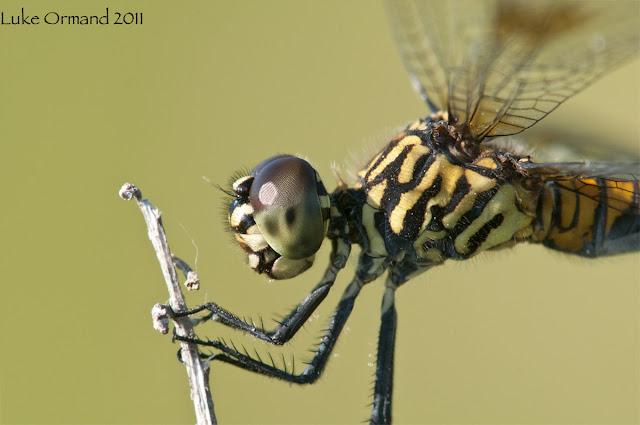 |
| Two images combined in Potoshop for maximized Depth of Field |
I apologize to any of you who follow this blog and wait and wait for updates. The fact of the matter is there aren't a whole lot of non-birds on Long Island in the winter that are readily available to photograph (aside from Squirrels and Deer). In the coming months when the weather finally improves (and we stop getting snowed on every week) I will make some ventures to Cupsogue and Montauk for Seals and before long it will be Spring time and frogs and snakes and the like will be emerging. But for now, I'm going to post a few shots from warmer, happier times.
These images all benefit from "image stacking" which is the process of taking consecutive frames and layering them on top of each other to increase the area that is in focus. With macro photograph, even with your lens stopped down to f/22 you are often unable to get your entire subject in focus. The only option then is to stack photos taken at different distances to achieve a photo that is in focus from front to back. There are several types of software that aid this process, including Photoshop (which I use) and mechanical and manual "macro" rails that move the camera and lens at specific intervals to assure proper stacking. This works best with stable subjects - like flowers but can be down if your dragonfly or otherwise is patient enough.
The way these images were created was with a lot of dumb luck, some layers in photoshop and a good eye. I don't own a tripod so I take all of my macro shots hand-held which makes it near impossible to do proper image stacking because I don't have the finite control to adjust the focal point of the camera. However, when I take photos in rapid succession, my natural movements results in different areas being in focus. I can then combine the images using photoshop. It's not easy and it's not perfect but it can work with a little practice. The lead image is about 70% from one shot and 30% (the lower area in focus) from another. Enjoy.
 |
| One frame had the eyes in sharp focus, the other had the body. Together they have both! |
This next shot was a little more difficult because I had moved ever so slightly so the dragonfly was actually larger in one frame then the next. Using the free-transform tool (control/command T in PS) I reduced the size of the larger image to match the size of the smaller image. I was able to get away with it because it was a pretty small discrepancy.
 |
| Similar to the above image, one hard the head/eyes in sharp focus, while the other image contained a sharp body. |

































